Established 93 years ago, the company that makes Twinkies cookies is very popular in the US, went bankrupt twice before being acquired for 4.6 billion USD last week.
James Dewar started his food business delivering pastries by horse-drawn wagon. By 1930, he was managing a Continental bakery in the Chicago area during the Great Depression. “The economy was tough,” he said in an interview 50 years later. So he looked for a product he could sell to people on tight budgets.
He looked no further than the factory, which produced bite-sized cakes filled with strawberries. Strawberries were only available in the summer, but bananas could be substituted. After filling the elongated sponge cakes with banana filling, all he needed to do was come up with a name for the new product. When he came across a billboard advertising Twinkle Toe Shoes, he settled on “Twinkies.” “I shortened it to make it a little more appealing to kids,” he says.
During World War II, the banana filling in Twinkies was replaced with vanilla due to shortages. However, the flavor of the cookies has remained largely unchanged to this day. For many years, Twinkie sales spiked in August, when schools started and parents bought them for their children to take with them.
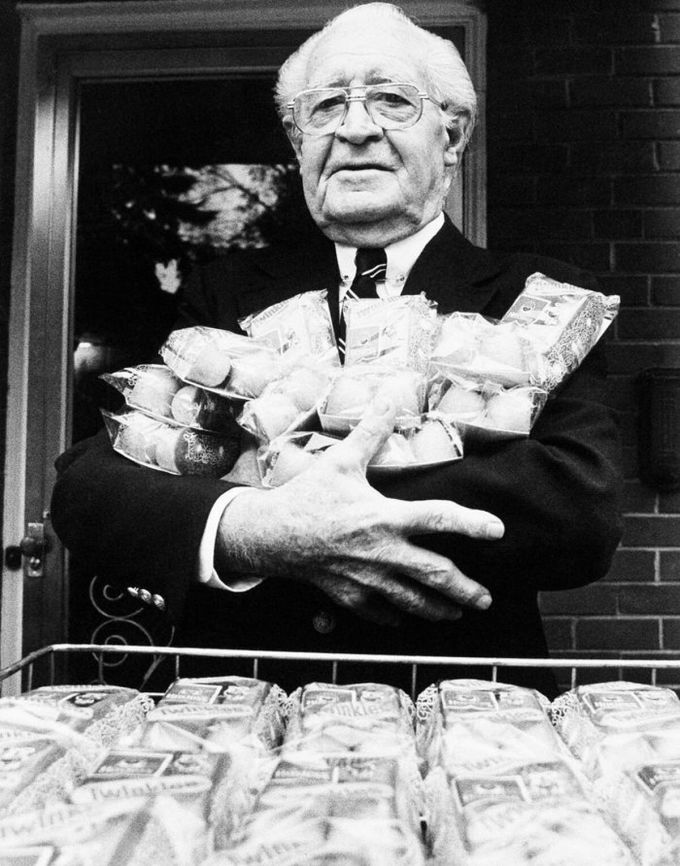
Twinkie creator James Dewar in 1980, celebrating the 50th anniversary of the creation of the snack. Photo: AP
Dewar himself ate several Twinkies a day until his death in 1985 at the age of 88. But business was tough as consumers became more health-conscious. The brand’s then-parent company, Interstate Bakeries, filed for bankruptcy in 2004, blaming Americans’ dislike of Twinkies on low-carb diets.
According to Wall Street, the company had made strategic mistakes and was heavily indebted. Interstate Bakeries emerged from bankruptcy protection in 2009, when Ripplewood Holdings paid $130 million for a 50% stake in the restructured company, renamed Hostess Brands.
But the stability didn't last, Hostess went out of business in 2012 after failing to reach a labor agreement with the bakers' union. For the next eight months, Twinkies were nowhere to be found in supermarkets and were being sold for astronomical prices on eBay.
During the shutdown, Apollo Global Management and Metropoulos & Co. teamed up to make a $410 million offer for the majority of Hostess’ business, which they completed in 2013 without facing any challenge from other competitors.
Apollo Global Management and Metropoulos & Co. took over a company without a union contract and in debt. Yet Twinkies returned to shelves in what they called “the sweetest comeback in history.” Since new investors hired veteran food executive Bill Toler as CEO of Hostess in 2014, the company has been racing to keep up with orders.
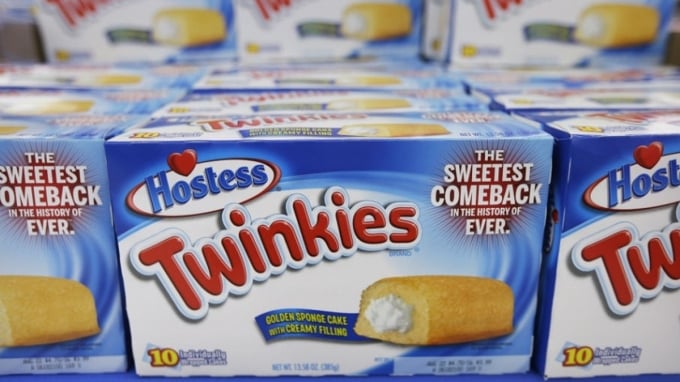
Twinkies boxes bearing the slogan "the sweetest comeback ever" are displayed at a Walmart on July 12, 2013. Photo: The Courier
But the price of returning has been steep, with investors dramatically scaling back Hostess, cutting its workforce from 34,000 when it filed for bankruptcy in 2004 to 19,000 when it began liquidation in 2012, and now to just 3,000. It operates just three of the company’s former 14 factories.
Investor C. Dean Metropoulos loved Twinkies long before he bailed out the company that made them. He had experience rescuing long-standing American brands like Ghirardelli chocolate and Pabst Blue Ribbon beer. When he took over, he realized the downside of Twinkies was that they had to be shipped to thousands of stores every week because of their short shelf life.
The system was expensive, required thousands of drivers and trucks, and still left many parts of the country without Twinkies. By using enzyme technology and mold inhibitors to regulate the product's moisture content, Hostess extended the shelf life of Twinkies from 26 to 65 days.
The longer shelf life allowed the company to switch to a less expensive distribution method. Instead of shipping the cakes to individual stores, they shipped half of their production to Walmart warehouses for distribution. This approach made Hostess a favorite among retailers and opened up new opportunities to serve smaller convenience stores scattered across the country. Toler calls it “the biggest change in the whole strategy.”
By reducing the number of factories and investing in automation, Hostess has seen its efficiency skyrocket, said Andrew Jhawar, an investor at Apollo Global Management. The company has also begun rolling out new products, including limited-edition items that tie into cultural events.
In 2016, Hostess returned to the public market with the help of Gores Holdings, a special purpose acquisition company (SPAC). They were valued at $2.3 billion. In 2018, Hostess got a new CEO, Andy Callahan.
In a recent interview, he admitted that Hostess’s cookies were outdated compared to Oreos and other popular snack brands, with little investment in marketing and new product development. So when he took over, he tried to transform Hostess into a modern packaged food company, which meant pouring money into talent, capabilities, and data.
In 2019, the company opened an office in Chicago to better understand the needs of retailers and consumers, and it opened its own centralized distribution center in Kansas, which helps streamline shipping by eliminating the need for third-party warehouses.
At the factories, they added new lines, installed moisture meters and advanced monitoring technology. Production processes were tweaked to make the amount of frosting on the one million Twinkies baked each day more consistent.
With the internal reshuffle complete, CEO Callahan went on the hunt. In 2020, Hostess acquired Voortman Cookies, which sells supposedly healthy snacks like sugar-free cookies. Since then, the company has rolled out a range of products to retain its loyal fans and attract new audiences like younger parents and convenience store-goers. Many of these products are meant to be eaten on the go.
One of the biggest bets is a snack smaller than Twinkies, called Bouncers. Hostess chief growth officer Dan O’Leary said golf-ball-sized versions were introduced last year. They’re designed to be eaten in two bites and easy to stuff into a lunchbox or give to a child in the car.
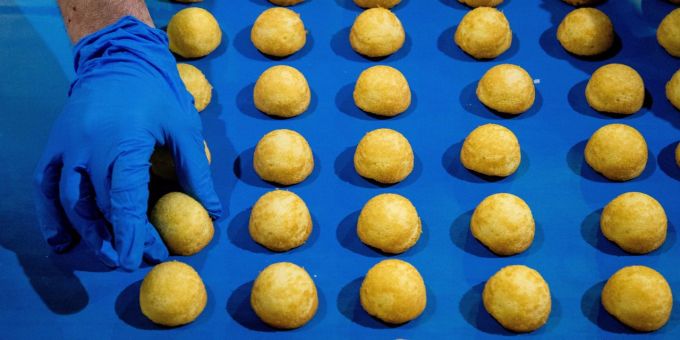
A Hostess employee's hands arrange golf ball-sized cake samples. Photo: WSJ
With the convenience segment accounting for about 40 percent of Hostess sales, the company introduced caffeine-infused Donnettes. Hostess says even small changes, like resealable bags and family packs containing multiple individual products, have made its brands more modern.
But the company’s path to recovery has been bumpy. In 2021, Hostess launched Crispy Minis, a small-sized wafer that flopped and was discontinued two years later. In June, the U.S. Department of Labor proposed a nearly $300,000 fine against Hostess after a worker at its Chicago facility lost the tip of a finger while reassembling a pump.
Federal investigators said safety and training failures led to the injuries, and that Hostess was lax in ensuring equipment such as mixers and coolers were safe. Hostess did not comment on the incident.
Still, Hostess’s annual revenue has grown 60% from 2018 to 2022, while its stock has more than doubled over the past five years, outperforming the S&P 500 and other major food companies. The company doesn’t break out sales figures for specific products, though it says Donettes are its best-selling product, even outselling Twinkies.
Last year, Hostess said it would invest $140 million to open a new facility in Arkansas to increase production of one line of cookies by 20%. Sean Connolly, CEO of food company Conagra and Callahan’s former employer, said the Hostess CEO has accomplished the important task that old, iconic brands often face: modernizing them and making them relevant to consumers.
"There can be a fine line between an iconic brand and an antique. He (Connolly) has pushed innovation into these brands that have become dusty and rusty," commented Sean Connolly.
Americans’ changing snacking habits are also creating opportunities for Hostess. Nearly half of U.S. consumers now eat three or more snacks a day, up 8 percent in the past two years, according to market research firm Circana Group. U.S. snack sales rose 11 percent last year to $181 billion.
In addition to Hostess, that has become a huge business opportunity for companies like Hershey and Mondelez International. The makers of Chips Ahoy cookies, Triscuit crackers and Pirate's Booty cheese puffs have also seen sales outpace those of other major food companies in recent years.
Food industry CEOs say the pandemic has boosted demand for cakes, candies and other snacks. Hostess is a popular snack among younger consumers.
Just this week, Hostess reached a deal to sell itself to the jam and jelly company JM Smucker for $4.6 billion. The deal marks the biggest turnaround yet for a bakery that was born during the Great Depression, adjusted during World War II, and went bankrupt twice, according to the WSJ .
Before he put down his money, Smucker had been studying the bakery category and Hostess's business for a while. Now, it was Smucker's job to keep people buying Twinkies.
But like most packaged food companies, Hostess has seen sales decline recently as consumers balked at higher prices and the company lost market share in some categories. JM Smucker executives plan to ramp up marketing efforts to boost growth for Hostess brands. The acquisition, in turn, would give Smucker more access to convenience stores.
Callahan says many people still don’t think to buy Twinkies because some undervalue the product for its price. Scrawled on a whiteboard in his office last month, not long before the $4.6 billion deal, were notes from a session on how he could fix that problem. The goal was to let consumers know Twinkies are “better than you think.”
Phien An ( according to WSJ )
Source link


![[Photo] National Conference "100 years of Vietnamese Revolutionary Press accompanying the glorious cause of the Party and the nation"](https://vphoto.vietnam.vn/thumb/1200x675/vietnam/resource/IMAGE/2025/5/30/1cf6cd5c8a934ebfa347028dcb08358c)
![[Photo] General Secretary To Lam receives Chief of the Central Office of the Lao People's Revolutionary Party](https://vphoto.vietnam.vn/thumb/1200x675/vietnam/resource/IMAGE/2025/5/30/140435f4b39d4599a3d17975dfb444c5)


![[Photo] A delegation of 100 journalists from the Vietnam Journalists Association visits the soldiers and people of Truong Sa island district.](https://vphoto.vietnam.vn/thumb/1200x675/vietnam/resource/IMAGE/2025/5/30/0984a986227d4e988177f560d2e1563e)
![[Photo] Journalists moved to tears at the Memorial Service for the soldiers who died in Gac Ma](https://vphoto.vietnam.vn/thumb/1200x675/vietnam/resource/IMAGE/2025/5/30/9454613a55c54c16bf8c0efa51883456)








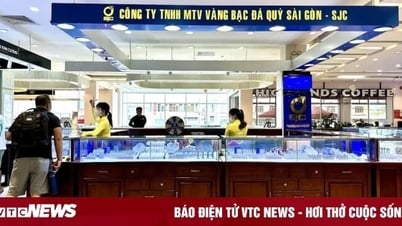











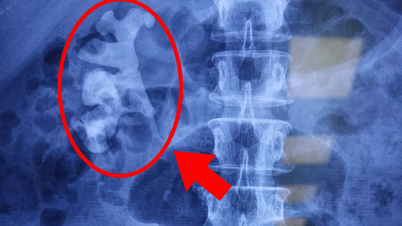












































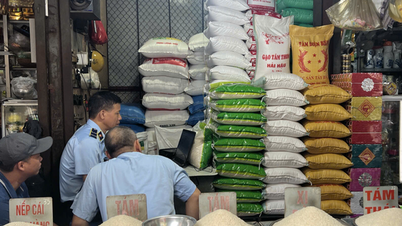




















Comment (0)